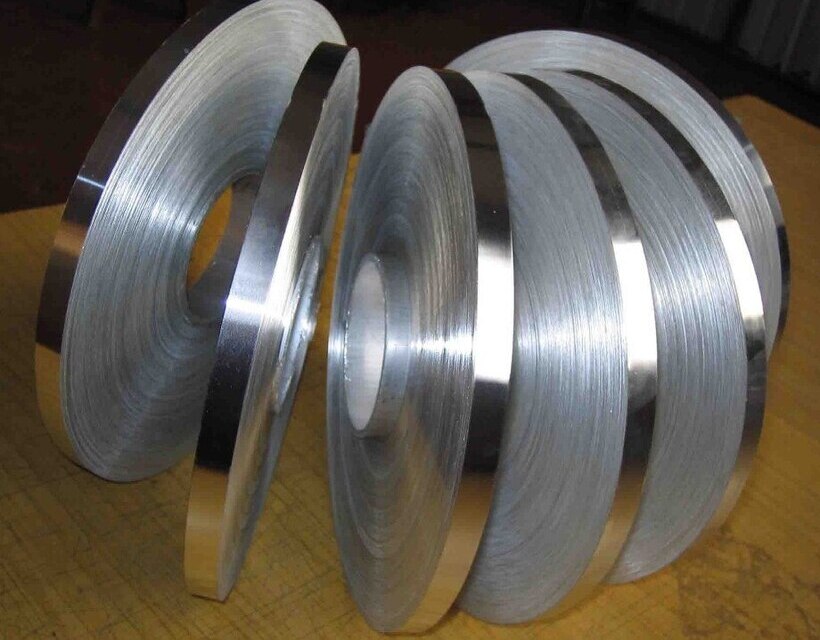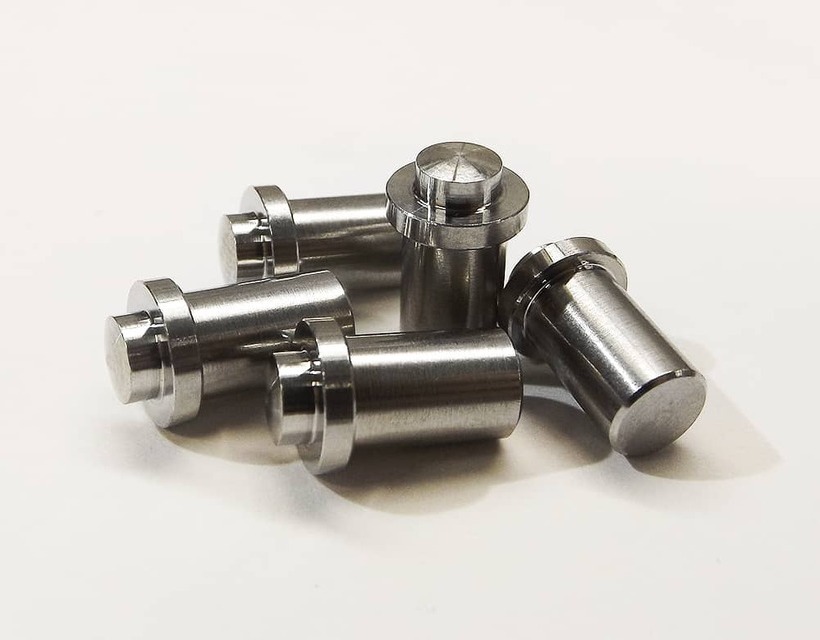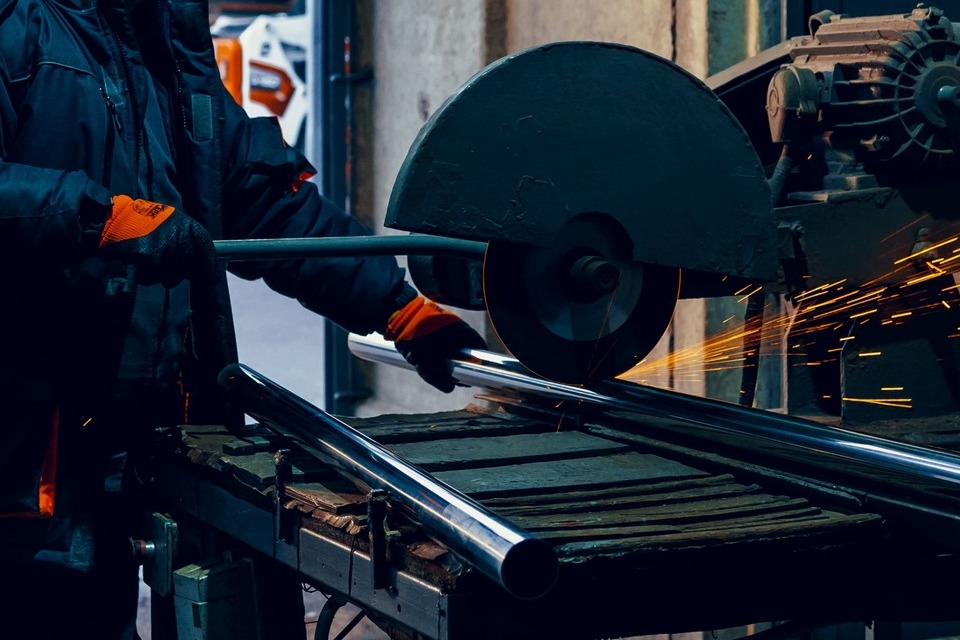Stainless steel is a beautiful and versatile metal that can give your project a sleek and modern look. Imagine the gleam of a polished stainless steel countertop, or the shine of an ornamental staircase railing made from this timeless material.
When it comes to choosing which type of stainless steel to use for your project, there are two popular alloys—304 and 301—that offer different benefits depending on what you need.
In this article, we'll break down the differences between 304 and 301 stainless steels so that you can make an informed decision about which alloy is best for your project. Whether you're looking for strength, corrosion resistance or cost savings, one of these alloys will have something to offer!
Overview of Stainless Steel
Both 304 and 301 stainless steels offer superior corrosion resistance, making them ideal for long-lasting projects. You can trust that your project will last for years to come when you choose either of these materials.
Both stainless steel grades are strong and durable, so you don't have to worry about your project getting damaged or wearing out quickly. Additionally, the stainless steel is non-magnetic, which makes it easy to work with if you need to cut or drill it.
Not only is it easy to use, but it also looks great in any application, giving your project a professional finish. So no matter which grade of stainless steel you choose, you can be sure that it will look great while also providing reliable protection against the elements.
Composition of 304 and 301 Stainless Steels

You may be wondering what sets 304 and 301 stainless steels apart - their composition is a key factor!
When comparing the two, it's important to note that they both contain chromium, nickel, and carbon. However, 304 stainless steel contains higher amounts of chromium and nickel than 301 stainless steel does. Additionally, the percentages of these essential elements are slightly different:
- 304 has 18% chromium and 8-10% nickel
- 301 has 16% chromium and 6-8% nickel
These variations in composition can lead to subtle differences in properties such as strength, corrosion resistance, magnetism, machinability, formability, and weldability.
Knowing these details will help you determine which type of stainless steel is best for your project. The choice between 304 or 301 will depend on your specific needs – so make sure to consider all factors before choosing one over the other!
Strength and Corrosion Resistance
You might be wondering how the two stainless steel grades, 304 and 301, compare in terms of strength and corrosion resistance. Both offer good yield strength and tensile strength, but they differ in terms of their corrosion resistance.
Let's take a closer look at these differences to help you decide which grade is better for your project.
Yield Strength and Tensile Strength
When it comes to yield and tensile strength, you'll find that one gives more of a kick than the other.
Stainless steel 301 may have slightly lower yields and tensile strengths than 304, but its higher levels of chromium make it ideal for applications in which corrosion resistance is important.
On the other hand, stainless steel 304 has higher strength and better formability than 301 due to its increased nickel content. It can be used in more demanding applications such as bridges, railroads and food processing equipment where greater mechanical properties are required.
The difference between both steels lies in their content composition - so when deciding which one is better for your project, consider your specific requirements and the type of application you need it for.
Corrosion Resistance
You'll find that stainless steel 301 and 304 offer different levels of corrosion resistance, depending on the application. Both are ideal for protecting against rust and other forms of deterioration, but 301's higher chromium content gives it a slight edge in this regard.
In comparison to 304, 301 has 20% more chromium content which makes it better able to resist oxidation and corrosion in many environments. This benefit can also be seen when comparing the two steels' properties in extreme temperatures—301 is more resistant than 304 to long-term exposure at higher temperatures due to its increased chromium content.
So if you're looking for superior corrosion protection, then stainless steel 301 may be the best choice for your project.
Cost Comparison
Comparing costs, the choice between 304 and 301 quickly becomes clear. When it comes to budgeting for your project, 304 stainless steel is by far the more cost-effective option.
Not only does 304 have a lower price per pound, but it also provides better corrosion resistance than 301, making it a longer-lasting option overall. You can get more bang for your buck with 304 stainless steel!
Plus, since 304 steel is an austenitic stainless steel alloy, its formability and weldability make it ideal for both hot and cold working processes. This means that you can shape and bend the material to fit whatever design specifications you need without having to worry about cracking or other damage caused by extreme temperature changes.
Ultimately, if you're looking for maximum value and performance at minimum cost, then 304 stainless steel is the way to go.
Other Properties
Now let's move on and take a look at some of the other properties that make stainless steel 304 and 301 different. While the cost difference may not be significant, there are other things to consider when deciding which type of stainless steel is best for your project.
Stainless steel 304 offers greater corrosion resistance than 301, making it an ideal choice for applications where exposure to salt water or acidic chemicals is possible. Additionally, 304 has higher tensile strength and durability compared to its counterpart.
On the other hand, 301 offers higher ductility and formability than 304 which makes it suitable for complex shapes or parts that require extra bending or forming. Ultimately, choosing between these two materials will depend on what kind of application you have in mind and how much performance you need from your stainless steel product.
Applications of 304 and 301 Stainless Steel

Discovering the specific applications of 304 and 301 stainless steel can help you make an informed decision about which material is best for your needs.
When it comes to outdoor applications, such as fencing or railing, 303 stainless steel is better suited due to its superior resistance to corrosion and oxidation. This makes it a great option for projects that need to withstand harsh elements like saltwater or acid rain.
On the other hand, if you're looking for something more cost-effective for indoor use, then 301 stainless steel may be a better choice. It's strong enough to withstand most daily wear and tear while being cheaper than 304. Additionally, since it doesn't corrode quickly indoors, it provides greater longevity than other materials.
Ultimately, understanding these two materials' particular strengths can help you decide which one will provide the greatest benefit in your project.
Advantages and Disadvantages of Both Alloys
When it comes to choosing the perfect alloy for your project, there are advantages and disadvantages of both 304 and 301 stainless steel that should be considered. Both alloys offer great corrosion resistance, strength, and formability, but they have subtle differences that could make one material better suited for your needs than the other.
Here's a quick look at what these two alloys offer:
•304 Stainless Steel is well-known for its durability and excellent corrosion resistance in various environments. It can withstand temperatures up to 1500°F (816°C) without experiencing any scale or loss of properties. Additionally, this alloy has a good combination of strength and formability compared to other ferrous materials.
•301 Stainless Steel is more magnetic than 304 — making it an ideal choice if you're looking for a magnetically attracted component in your project. It also offers excellent wear resistance when exposed to higher temperatures because it forms an oxide film on its surface that prevents oxidation from occurring. However, 301 may not be as resistant to corrosive elements as 304 is due to its lower chromium content.
Both alloys have their own unique set of characteristics that could make them useful in certain projects over the other, so it's important to consider what qualities are most important before making your decision! By understanding the benefits and drawbacks of each option, you'll be able to choose the best stainless steel alloy for your project with confidence.
Which Alloy is Best for Your Project?

Deciding between 304 and 301 stainless alloys for your project can be tricky, but by understanding each alloy's advantages and disadvantages, you'll be able to make an informed decision. One that will ensure you get the best results.
The 304 alloy is a popular choice due to its durability and corrosion-resistance properties. It can withstand extreme temperatures without losing its structural integrity, and it's also relatively easy to weld.
On the other hand, the 301 alloy is more malleable than 304 and offers better formability when working with thin sheets of metal. It also has higher ductility than the 304 alloy, making it easier to work with in tight spaces or complex shapes. However, because it's softer than 304 stainless steel, it may not be as resistant to wear over time.
When choosing the right stainless steel for your project, consider both alloys carefully before making a decision. Pay attention to how much stress or strain you anticipate placing on the material during your project so that you can optimize strength without sacrificing ductility or formability.
You can rely on either alloy for long-term performance. But depending on your specific needs, one may suit your project better than the other!
Summary
By carefully considering the advantages and disadvantages of both 304 and 301 stainless alloys, you can make an informed decision that will get you the best results for your project.
Both alloys are corrosion resistant and have similar appearances, but there are several key differences in their chemical makeup that could influence which one is better suited to your project. The 304 stainless steel alloy contains 18% chromium and 8% nickel while the 301 alloy has a higher amount of chromium at 16%. This means that 304 is more rust-resistant than its counterpart. Additionally, while both offer excellent tensile strength, 301 is slightly stronger with a greater ability to withstand high temperatures.
Ultimately, which alloy is best for your project depends on what kind of environment it will be exposed to and the temperature conditions it will experience. If cost is also a factor in your decision making process, then keep in mind that 304 stainless steel tends to be more expensive than 301 due to its higher nickel content.
By taking into account these factors and doing research about any additional considerations needed for your specific application, you can make an educated selection between 304 or 301 based on what will work best for your needs.
